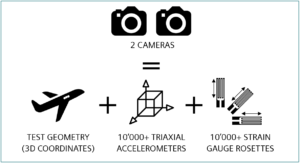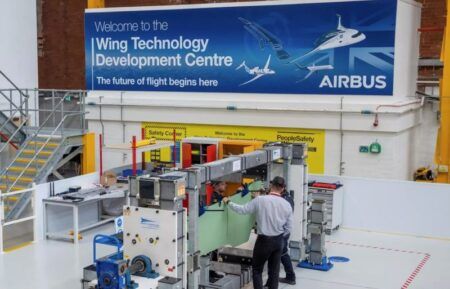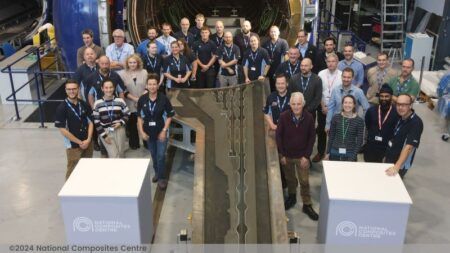Accurately characterizing such materials and structures can be a challenge. Standard measurement techniques, usually based on strain gages, only provide limited and local information. The fast development of digital camera technology in combination with high performant digital image correlation (DIC) techniques is currently bringing a change in this domain.
Thanks to DIC, it is now possible to extract full-field 3D geometry, displacement, strain, and acceleration, under any load and for almost any type of material, with limited instrumentation. The technique is useful for measuring deformation of materials and structures under static and quasi-static loading. DIC is also applicable to dynamic measurements and has been recently extended to address vibration measurements and modal testing of structures.
The principle of digital image correlation is simple but powerful. This optical-numerical measurement technique allows to extract full-field information on the tested object from images captured with digital cameras. The DIC algorithm will compare all images with a reference one and extract shape and displacement quantities in the region of interest on thousands of measurement points and with a subpixel accuracy.
Once displacements are available, strains, stresses and other derived kinematic quantities can be immediately derived. As a result, it is possible to obtain a detailed view of the complete deformation field of the object under test as the loads evolve, monitor the strain level and identify local regions with critical stress levels.
Simcenter Testlab offers a complete and modular software to efficiently acquire images and provides quantitative and accurate full-field results based on the DIC technique. As the industry evolves more and more towards a virtual-based product design, having accurate information on the actual properties of the materials is obviously critical.
Thanks to a wide library of material models and the implementation of the Virtual Field Method, the solution allows to take advantage of full-field experimental results and extract accurate material parameters directly from measured data. DIC can also be used to analyze results from Finite Element (FE) models and to ensure reliable and quantitative comparison between FE and full-field experimental data.
DIC is also a complementary technique to traditional approaches for vibration measurements based on discrete accelerometers. It relies on a very limited instrumentation and full-field information can provide more insights into the dynamic behavior of aerospace structures.
Once DIC data is processed, it can then be used for modal or operational analysis. DIC can be used for vibration testing as a standalone system or in combination with other vibration sensors. The latter scenario offers for example to derive frequency response functions from the measured displacement time histories, or combine the global structural behavior captured with accelerometers with local full-field information from a DIC system.
The technique allows to address a wide range of structures from small material samples or components to very large structures such as integrated aircraft in the context of ground vibration testing. DIC does not necessarily require high-speed cameras to measure vibrations and characterize the modal behavior of aerospace structures. More affordable low-speed cameras can also be used. In this case, a resampling technique is automatically applied after the measurement which allows to extract vibration data at frequencies well above the frame rate limit of the cameras.
DIC offers new capabilities for efficiently validating complex materials and aerospace structures. Full-field information obtained with limited instrumentation are key elements that make it very complementary to traditional measurement techniques.

This article was provided by Siemens





